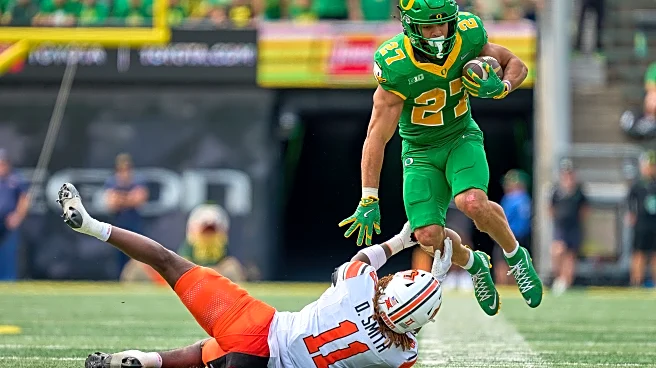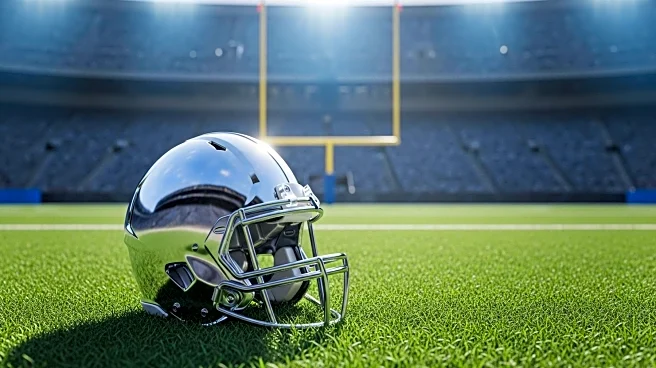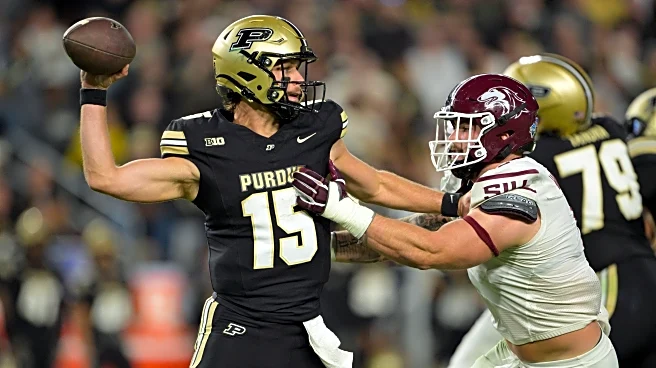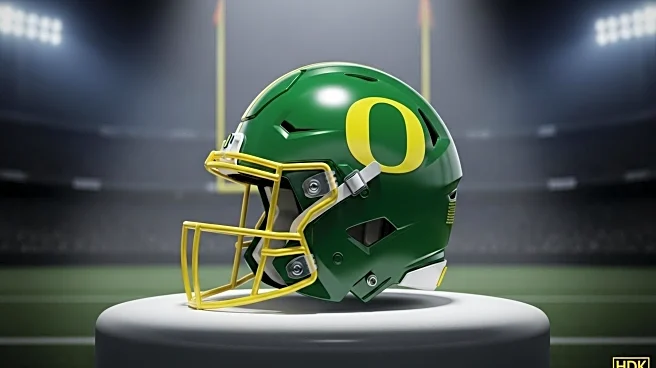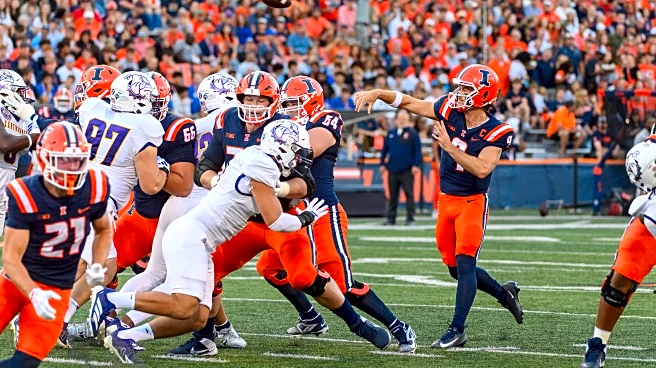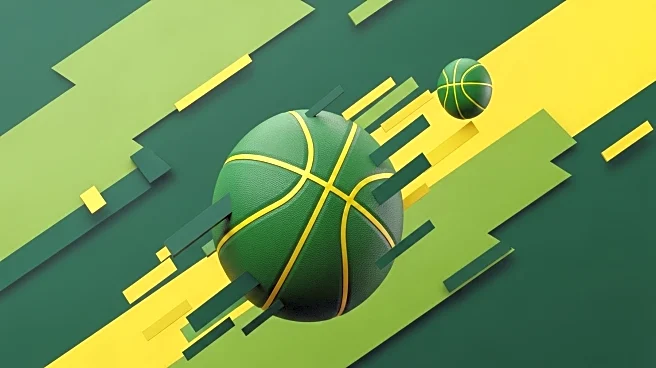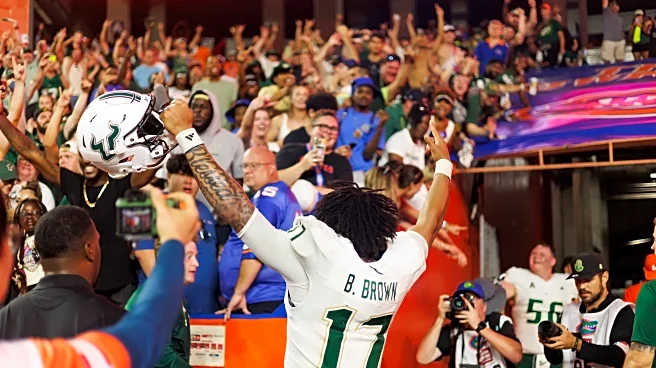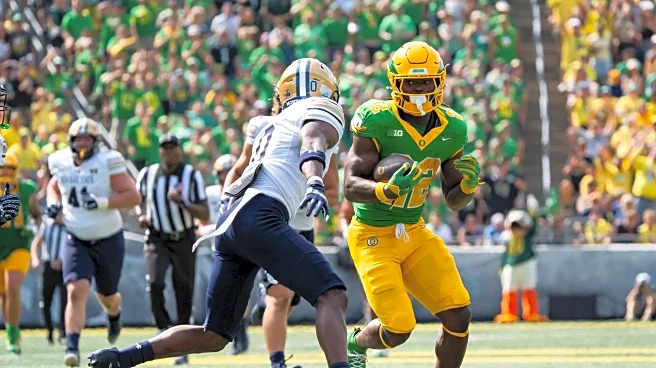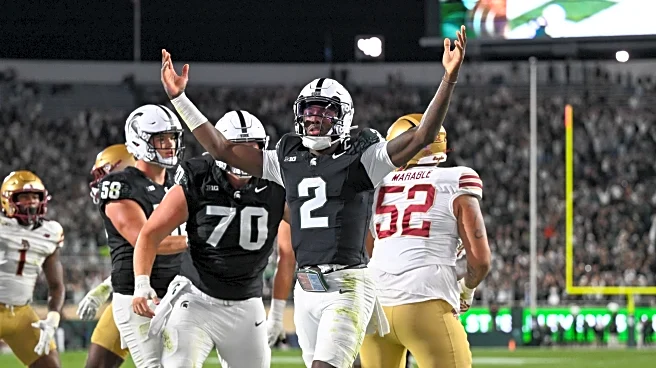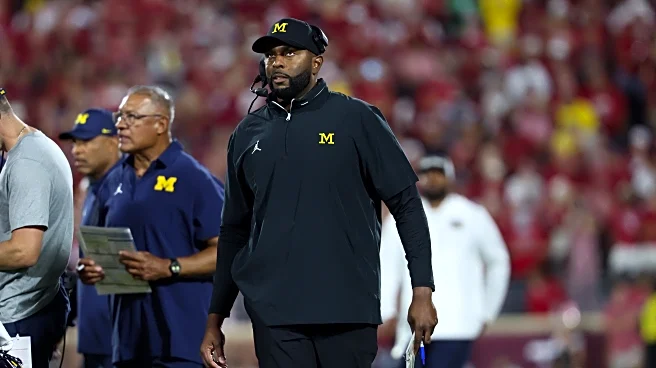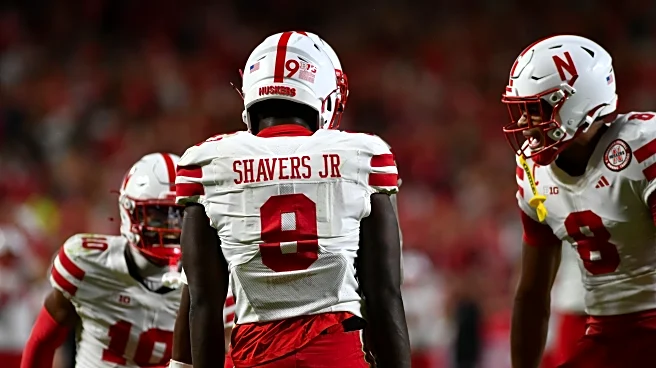
As with last week, the Oregon staff kept their starters in on both offense and defense throughout the first half and the first drives of the second half even though the score had already put the game out of reach. I assume this is to prepare the team to keep their focus and intensity coming out of halftime when the games are close. There is an argument to be made that garbage time began after the Ducks’ sixth possession when the score became 34-3. Since neither team changed their play calling after this,
I included Oregon’s final possession of the first half. Despite starters still being on the field after halftime, the 41-3 score meant the game had become a joint practice for all intents and purposes. As such, I only charted the Ducks first 7 possessions and the Cowboys first 5 as representative play.
Offense
Oregon obviously noted the same issues with inside runs we at ATQ did and worked diligently to address the issues with offensive line play that were apparent against the Bobcats. The result was a tremendously balanced and supremely productive offensive effort: 18 called runs to 18 called passes with cumulative 66.67% efficiency, 27.78% explosiveness, and 11.24 adjusted yards per play (the 37th play before garbage time was a flea-flicker screen and excluded from these numbers).
Even better, explosive plays came from inside runs, outside runs, and deep passes. The offensive line had combined error rates of 9.33% in pass protection and 17.78% in run blocking. This is a significant improvement from Week 1, with the caveat that most drop back passes were designed for quick releases so the protection didn’t have to hold for long. Still, Oregon had explosive plays on every drive before garbage time and scored touchdowns on 6 out of 7 possessions (all full field drives), the only empty possession partly the result of a downfield holding penalty.
Oklahoma State struggled to contain Oregon’s running game whether it was between the tackles or on the perimeter. Unlike against Montana State, the Ducks had explosive runs both up the middle (2) and around the edge (4). Contrary to our pre-season expectations, veteran Noah Whittington has been splitting most snaps with Jayden Limar and Jay Harris rather than transfer Makhi Hughes. Part of this may be trusting the returners more in pass protection, but Limar has shown more strength this season than what his previous film had indicated. Additionally, despite some very impressive reps in garbage time last year, R-Fr. Da’Jaun Riggs has apparently been leap frogged by true freshmen Dierre Hill Jr. and Jordon Davison. Freshman WR Dakorien Moore also got a carry on a sweep in the first half. Below is a representative sample of successful rushing plays:
(Reminder – you can control the playback speed in the settings by clicking the gear icon in the bottom right of the player)
- :00 – Oregon was determined to establish the threat of interior runs after struggling against Montana St. On the second play of the game RB #23, lined up in the slot to the offense’s right, comes in motion to occupy the boundary corner. The blocking is textbook: four of the defenders in the box are walled off to the offense’s left by the line executing zone assignments while the DE and LB to the offense’s right are blocked out by LG #74 and TE #18 pulling across the formation. Astute readers here at ATQ won’t need the telestrator on the replay to know why this run that is simply designed to pick up 5 yards and a first down instead results in a touchdown. The very same safety hythloday’s preview noted as a potential liability misplays his gap assignment.
- :27 – Later in the first quarter the Ducks decide to test the edge of the Cowboys defense. The motion from RB #6 pulls the field side LB away from the play. This helps give RT #71 a better angle on the defender, though he misses at first and nearly commits a hold. While C #72 and LG #75 open a hole between the corner and boundary LB the rest of the blockers get their helmets playside to seal the edge and get Whittington around the corner. (Oregon went hurry up after this so the replay cuts off early).
- :42 – J. McClellan, WR #11, is lined up almost in an H-back position to the offense’s left with the QB under center. McClellan leads the back, RB #20 M. Hughes in this case, around the right side. The TE does just enough to keep the OLB occupied and Hughes doesn’t get hit until he is already five yards downfield. The line does a perfect job with their zone blocking assignments. Keep your your eyes on C #72 I. Laloulu and LG #75 E. Pregnon as they handle the twist by the defensive tackles and prevent any penetration into the backfield.
- :52 – Oregon goes straight ahead here to try and punch it in near the goal line. The blocking could be better as C #72 can’t keep his helmet playside and allows a defender into the hole while LT #76 loses control of his man. Despite this RB #27 Limar pushes the pile into the end zone. According to the official roster, he is playing at five pounds heavier than last year. That might be underselling it as I hadn’t seen this kind of strength from him on film before.
Though the run blocking showed significant improvement from week 1, the transfer heavy line still didn’t perform near the “Oregon standard” of near 10% run blocking error rate. I’d characterize their performance as closer to FBS average. Whether they can continue to improve on these numbers before the competition ramps up at Penn State remains to be seen. Here are some examples of failed rushing plays:
- :00 – Both of Oklahoma St.’s defensive tackles slant towards the offense’s right and offensive line fails to adjust. Penetration into the left A-gap between C and LG makes the RB #22 J. Harris decide to bounce outside to his right. There is nowhere to go as the TE cannot seal the edge and WR #2 misses his block on the nickel defender. Having RT #71 fail to release to the LB and C #72 lose his balance doesn’t help.
- :07 – Late in they second quarter the motion by RB #23 D. Hill is similar to the Whittington touchdown from clip 1 above. The blocking scheme is different though, C #72 I. Laloulu executes a “fold” block by moving behind the RG and RT after snapping the ball. There is plenty of room to run if TE #18 hits the playside ‘backer. He doesn’t.
- :20 – The Cowboys are prioritizing pass defense with under two minutes left in the half so there is a light box that could be exploited. Watch the left side of the offensive line, Oklahoma St. runs a T/E stunt with the end looping behind into the A-gap. The LT #76 and LG #75 don’t adjust properly and RT #71 also loses control of his man. Limar tries to spin off his own man but the pursuit is too quick.
- :39 – I normally wouldn’t include a run like this as a failure, as it set up a 4th and short that Oregon went on to convert. Given the offense’s efficiency in this game I didn’t have many choices though. To convert this third and long RG #74 needs to not lose his momentum against the DT so he can reach OLB Ok. St. #4, LG #75 needs to release from his double team more quickly to reach the safety, and WR #4 has to sustain his block a second longer. Limar does a great job to drag his tacklers for three extra yards to make going for it on fourth down the best option.
In the first two games we’ve seen a large number of players targeted in the passing game, contrary to the limited rotation OC Will Stein has used in years past. Against Oklahoma St. QB Dante Moore targeted six different wide receivers, two tight ends, and RB Jayden Limar before garbage time. Time will tell if such a large rotation remains in play during close games. Unlike last week, there were deliberate attempts to stretch the field vertically as well as horizontally. Below is a sample of successful passing plays:
- :00 – Dante Moore demonstrates graduate level quarterback play on this pass. The pre-snap motion has rotated the safeties and left only the free safety to the offense’s left with a chance against the post route being run by WR #4 M. Benson in the slot to the offense’s right. On the reverse angle you can see how Moore looks to his left after the snap to move the safety out of position. He needs to throw the ball far enough downfield that the safety doesn’t have a chance to recover. His trust in the speed of his receiver is rewarded as Benson makes a reaching catch in stride for the touchdown.
- :28 – OC Will Stein only called three conventional screen passes this game and two of them were successful. Moore makes an accurate throw so WR #2 G. Bryant Jr. can run upfield as he makes the catch. On the perimeter WR #1 loses control of his man, but fortunately WR #11 shoves the nickel defender in the way of the corner. This gives Bryant enough room to pick up seven yards before the safety can make a tackle.
- :36 – There are five defenders over four eligible receivers to the offense’s left, so WR #14 J. Lowe is one-on-one against the corner running a short angle route on the offense’s right. Moore sees the defender has given up inside leverage as soon as he looks in that direction and begins his throwing motion before Lowe is out of his break. This should be only a 7 yard play, but Lowe shakes off the safety to get an extra two yards with run after catch.
- :49 – Moore starts under center and a play action fake to the offense’s right pulls the linebackers out of position. This leaves OLB Ok. St. #4 in conflict as the corner has been run off by the TE so there are no defenders in the flat. Moore releases this throw side arm to make sure he gets around the rushing ‘backer, but it comes out awkwardly. His receiver, #11 McClellan, does a terrific job to reach behind himself to secure the ball before turning upfield where blocks from TE #18 Sadiq and WR #17 C. Perry help make this an explosive catch and run.
There was notable improvement in pass protection from last week, but it wasn’t perfect and Moore had to deal with pressure occasionally. There were no drops by receivers on my tally sheet during meaningful play, but Moore is still testing the boundaries of what he can get away with in this offense and he missed a couple throws as well. Below are some examples of failed passing plays:
- :00 – This was the only one of the three called screen passes that failed, and for uncomfortably familiar reasons. It’s a good play call as Oklahoma St. is sending five rushers and the back out leverages the ILB to the sideline. Both perimeter blockers, WR #14 at flanker and RB #27 coming in motion, just whiff on their blocks. The ball carrier, RB #22 J. Harris, runs through first contact but by then the cavalry has arrived for the defense.
- :10 – This play is designed to get the ball to WR #14 J. Lowe, lined up alone to the offense’s right, coming across the field over the middle while the rest of the receivers set up blocks for him. The timing is tricky as he either needs to dip back behind the LoS to make this a screen pass or get the ball before the blocks are thrown to avoid offensive pass interference. It’s close but he makes the catch at about the same time TE #18 Sadiq makes contact with his man and no flag is thrown. This is a great job by the corner Ok. St. #1 to track Lowe all the way across the field and set up fourth down.
- :28 – Oregon tries to convert on the ensuing fourth down with a quick throw to the flat targeting WR #2 G. Bryant Jr. coming in motion to the offense’s right. In the Pac-12 this probably would have been called DPI against Ok. St. #11, but with Big Ten officials this is just typical pass defense. The defender had leverage on this route in any case. From the skycam angle if Moore pump fakes to Bryant then looks back toward his left he’ll see open field to scramble for the line to gain.
- :44 – The Cowboys get aggressive on second and short by sending six pass rushers against a five man protection. The line correctly slides to their left so the QB can account for the extra rusher coming from his right. Moore does well to avoid this first rusher. If the RG and RT had successfully handed off responsibilities when the DE looped behind the OLB Moore could have stepped up and had an easy touchdown to #2 Bryant on the slant. As it is, the quarterback does well to get rid of the ball vaguely in the direction of #27 Limar to avoid a sack.
Defense
Oregon won the coin toss and chose to begin the game. Combined with a well managed four minute drive near the end of the second quarter Oklahoma St. only had six possessions before garbage time. Four of these drives were three-and-outs, one ended in a punt after four plays, and their only scoring drive got to the Duck’s five yard line before stalling out and settling for a field goal. There were too few snaps played by the defense to meaningfully separate passes from runs but the cumulative numbers are startling: 67.74% defensive success rate, allowing only a 6.45% explosive rate and a mere 3.9 adjusted yards per play.
Having lost the previous starter to a broken foot and with precarious depth at the quarterback position, the Cowboys didn’t use Zane Flores, the current starter, in the running game last week against FCS UT Martin. Against the Ducks they were willing to take the risk, but it didn’t give them the edge they needed. Oregon rotated frequently along the front, but aside from their one scoring drive Oklahoma St. couldn’t get any push against the Ducks defense. The only explosive run the Cowboys had before garbage time came on 3rd and 18 as they were playing for room to punt the ball away. Here is a sample of successful rush defense:
- :00 – DC Tosh Lupoi deployed a couple of defensive alignments I don’t recall seeing very often last season. On this early play Oregon is betting Oklahoma St. is going to run so #28 B. Boettcher is lined up as OLB to the offense’s left and S #31 D. Thieneman comes down into the box to take Boettcher’s usual position. Boettcher stays wide to guard against the QB keep so it’s a hand off. Thieneman is now in a perfect position to defend the B-gap the RB is aiming for. Penetration from DT #52 A. Washington forces the back to try to reverse course, but Boettcher has pursued down the line of scrimmage and multiple defenders have gotten off their blocks so there is no room to run.
- :07 – Freeze this clip before the camera zooms in and look at the alignment of the secondary. It appears at first glance that there are three safeties deep, but to the field side on the offense’s left the nickel back #22 J. Canady is the deep defender outside the hash marks. The true safety is in the middle of the field, #2 K. Lopa, who walks toward the line of scrimmage as an extra run defender. He’s behind the linebackers, but is fast enough to get to the ball carrier from this depth. Using an athletic safety to defend the run and short passes from this position reminded me of Ohio State’s plan from the Rose Bowl.
- :17 – The Cowboys decide they need to risk running their QB with a chance to keep the game from getting away from them completely early in the second quarter. Watch the middle linebacker #28 B. Boettcher and S #21 A. Flowers waving their arms to indicate they are adjusting their assignments as the TE motions across the formation. The edge defender to the offense’s left, OLB #44 T. Tuioti, squeezes down toward the offensive tackle so the QB pulls the ball from the mesh. You can see on the reverse angle that he keeps his weight balanced over both feet so he can still pop out to defend the QB keeper. Flowers goes outside of the TE to cut off the sideline and the pair meet for a TFL.
- :30 – Oregon is willing to risk a light box on second and long. The Cowboys should have a numbers advantage running to the offense’s left. The A-gap is held by DT #99 T. Green, LB #28 Boettcher meets the pulling guard to force the runner to bounce outside, and DE #29 A. Porter sets the edge.
The only drive where Oklahoma St. got into scoring position was also the only drive where they were able to string together a few efficiency runs to keep the chains moving. Outside of this one possession Oregon’s defense only gave up one successful run outside of garbage time: a 4 yard gain on 1st and 10. Some examples of failed rush defense:
- :00 – On Oklahoma St.’s first offensive play of the game, the Ducks are already showing their new safety alignment. This time #22 J. Canady is deep outside the hash marks to the offense’s right while S #31 D. Thieneman is only ten yards deep in the exact middle of the field. The Cowboys try to go right up the middle but DT #50 T. Gray holds his ground and #44 Tuioti crashes inside. The back has to bounce outside where ILB #26 has contain, but the runner falls forward to turn a 3 yard failed play into a 4 yard success on first and ten.
- :07 – This is another straightforward inside zone run, and the DTs and LB have the interior clogged. There is hole for the back to bend the run toward because S #21 has taken a poor angle coming from depth. Tuioti does a great job from his OLB position to release from his blocker and help limit the gain.
- :22 – This was one of very few instances where Oklahoma St. got a hat-on-a-hat at the line of scrimmage to give their runner a clean hole. The back, Ok. St. #24 (who didn’t play in the opener but hythloday’s 2024 film study tagged as the most dangerous back on the roster), does an impressive job pushing to pile to set up second and medium after a false start put the offense behind the chains.
- :32 – This the very next play after the previous clip and the Cowboys try to keep their momentum going by calling the same inside zone run to the opposite side. The linebacker #26 needs to attack the puller’s outside shoulder and OLB #9 has to get off his block in order to stop this.
Oklahoma St. had their struggles on the ground, but their passing offense was simply abysmal. Quarterback Zane Flores was under pressure nearly every time he dropped back and his receivers consistently failed to gain separation. With transfer CB Theran Johnson still held out with an injury, DC Tosh Lupoi has most often kept things simple and relied on his young players’ athleticism to hold up in man coverage. Some examples:
- :00 – Oklahoma St.’s pass protection can’t handle the twist with DT #42 A. Breland looping behind DT #52 A. Washington. The QB has to run for it and DE #10 M. Uiagalelei has maintained rush discipline so he can pursue. Even if he hadn’t, it was unlikely the quarterback could have gotten ten yards on the run when the linebackers were in zone coverage.
- :24 – A false start has put the Cowboys in first and fifteen, so the Ducks expect a pass and run a simulated pressure. To the offense’s right OLB #44 T. Tuioti drops into coverage while ILB #28 B. Boettcher rushes the passer. Tuioti actually makes an error by turning his hips outside before checking if there are any receivers in the flat, so he can’t drop into position to defend this in breaking route. Fortunately CB #3 S. Laulea is in tight man coverage and rakes at the ball with his long arms for a PBU.
- :43 – The safety to the offense’s left, #31 Thieneman over the inside receiver, reacts aggressively to the screen pass. The ball is thrown behind the receiver so he can’t make a move in the open field but the Thieneman doesn’t break down properly (something he needs to continue to work on). The ball carrier is slowed long enough for nickel back #0 D. Austin to get off his block and wrap him up. I’ll be very pleased if Austin continues to make me look like a fool for doubting him.
- :52 – Oregon is in their dime package with six defensive backs on third and long. A five man pressure breaks through the protection quickly so Flores has to get the ball out quickly. Austin is in coverage over the slot receiver to the offense’s right and drives on the in breaking route for a PBU.
Flores only had four completions during the first half, two of which were on failed perimeter screens. This means the Cowboys only had two successful passing plays outside of garbage time. I’ve included both below, along with two plays that were successfully defended but where defenders could stand to improve their technique. This game just didn’t give much to criticize in this area:
- :00 – The ILB to the offense’s right, #28 B. Boettcher, is going to come on a blitz so S #31 spins down to take his place. From this unusual position he makes the fundamental error against the RPO: biting on the run instead of staying in the throwing lane to force the hand off. The throw is inaccurate and it’s an incompletion in any case. The nickel back in coverage, #22 J. Canady, played the route properly was in position to tackle the catch to limit the gain.
- :13 – The receiver motion and play action puts the CB #4 in conflict on this play. He tries to hand off the TE to S #31 in the short middle of the field to pick up Ok. St. #14 in the flat, but he needs to stay with the deeper receiver until he declares his route. Better to gain depth and rally to the short flat because the TE is running an out route that no other defender is in position against.
- :33 – The Ducks are in their “double eagle” look again with #26 D. Jackson on the line of scrimmage to the offense’s left instead of his usual inside linebacker spot. The only defender in the middle of the field is LB #54 Mixon, who makes the mistake of stepping down to play the run rather than staying in position against the pass to force a hand off. He makes up for the error with impressive speed to get a hand on the ball, but if the QB throws more quickly this is a completion.
- :39 – This play is a coverage bust that led directly to the Cowboys’ only points of the entire game. On third and long the Ducks are sending the kitchen sink, eight pass rushers. Oklahoma St. is in max protect and rolling Flores to his right to buy time. The first rule of being a quarterback is to never throw back across your body toward the middle of the field. But when trailing by three touchdowns and the receiver is this wide open it’s worth a shot. Watch on the replay as first the nickel back and then the corner to the offense’s right signal to CB #7 to defend the middle of the field. Instead he follows the motion man all the way to sideline and ends up guarding empty turf.
